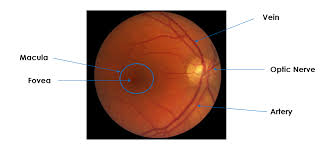The fundus examination, in clinical practice of ophthalmology, is one of the most frequent and necessary tests for the patient who comes to the consultation. Actually, it is done practically in the same way, since the appearance of the eye examination lenses in Ophthalmology. With them we can access the visualization of different intraocular structures.
To perform this test, it is necessary to dilate the patient’s pupil by intraocular drops of mydriatic medications, and when the ophthalmologist accesses the slit lamp, with the patient correctly positioned, the ophthalmologist can observe the vitreous gel (or gel that fills the eye inside), the retina or innermost layer of the eye, and the optic nerve at its entrance from the brain to the back of the eye (this is what we call Papilla). Likewise, the retinal vessels, both venous and arterial, and their pathologies are explored.
In this way, very varied pathologies can be diagnosed, such as age-related macular degeneration, which is so fashionable, or retinal vascular alterations, genetic alterations such as retinitis pigmentosa, and genetic macular degenerations such as stargardt macular dystrophy or Best’s vitelliform dystrophy.
This is a technique that is done to visualize if certain treatments used by rheumatologists mainly, such as Hydroxychloroquine or Tamoxifen in alterations such as systemic Lupus erythematosus or rheumatoid arthritis, are causing damage to retinal photoreceptors.
Also with this test we can observe retinal detachments that require surgical solution (vitrectomy), as well as tears or peripheral retinal degenerations, which need laser treatment, as a preventive way.
This technique makes it easy to examine patients with suspected glaucoma or overt glaucoma by exploring papillary excavation, and depending on how the edges of the optic nerve are found, neurological problems intracranial hypertension (being necessary to go to the neurologist for the corresponding lumbar puncture), brain tumors that cause asymmetric papilla involvement, or pathologies that cause inflammation of the infectious cause.
And finally to say that this test is a cause of diagnosis of primary intraocular tumors (the most frequent being choroidal melanoma). It is also necessary exploration when there is already a primary cancer, such as breast cancer in women and lung cancer in men, since they are clearly observed if there are choroidal metastases.
Everything that has been explained above, shows that it is a crucial exploration for patients. Being able to have a diagnosis and early treatment also helps in the case of tumors. This diagnostic technique allows the therapeutic approach to treatments to be varied, depending on the exploratory findings, and to improve the survival or quality of life of patients.
Dra.Carretero León,Gloria. Ophthalmologic surgery .
Marbella, Estepona, San Pedro de Alcantara.


Recent Comments